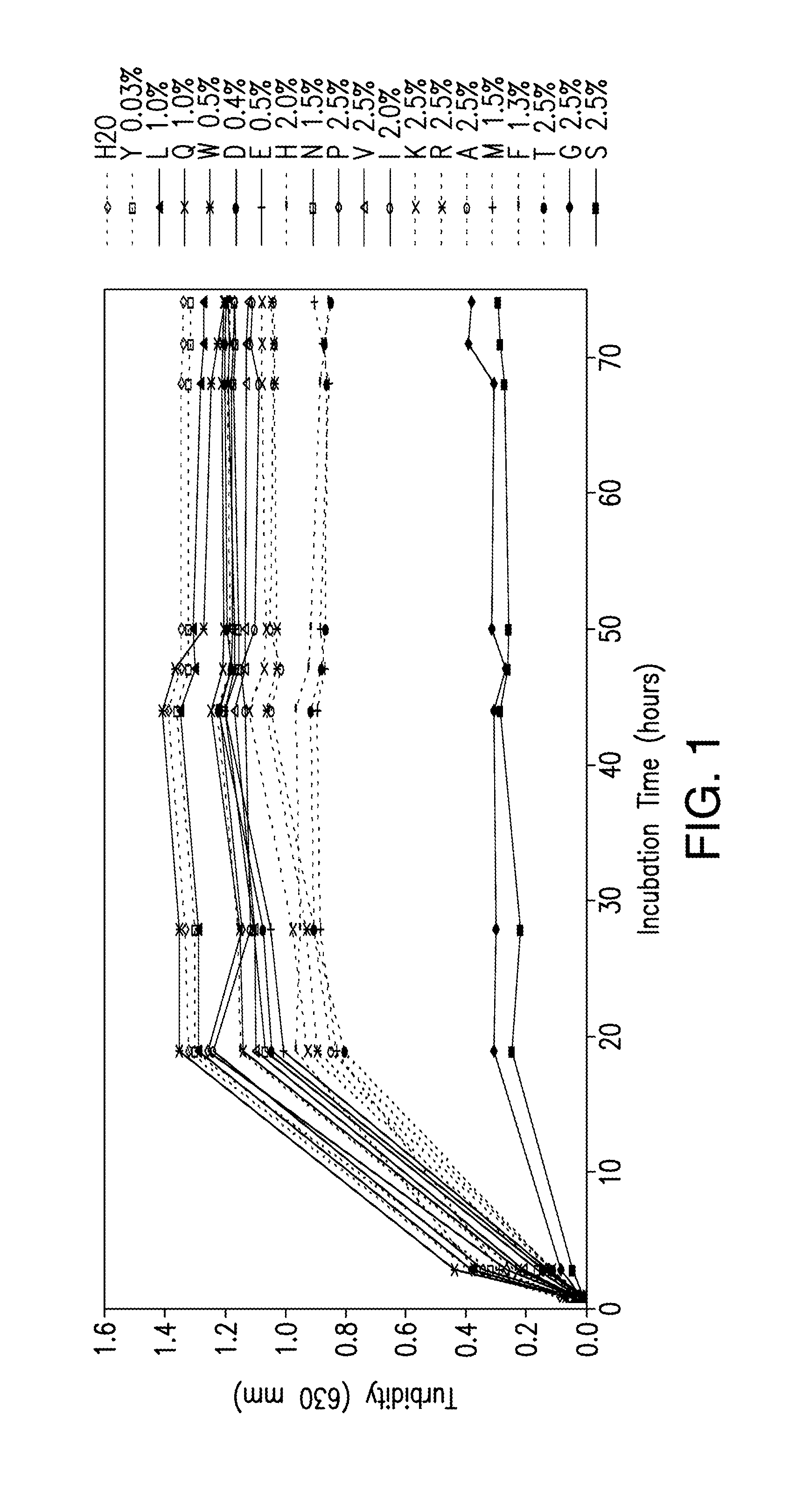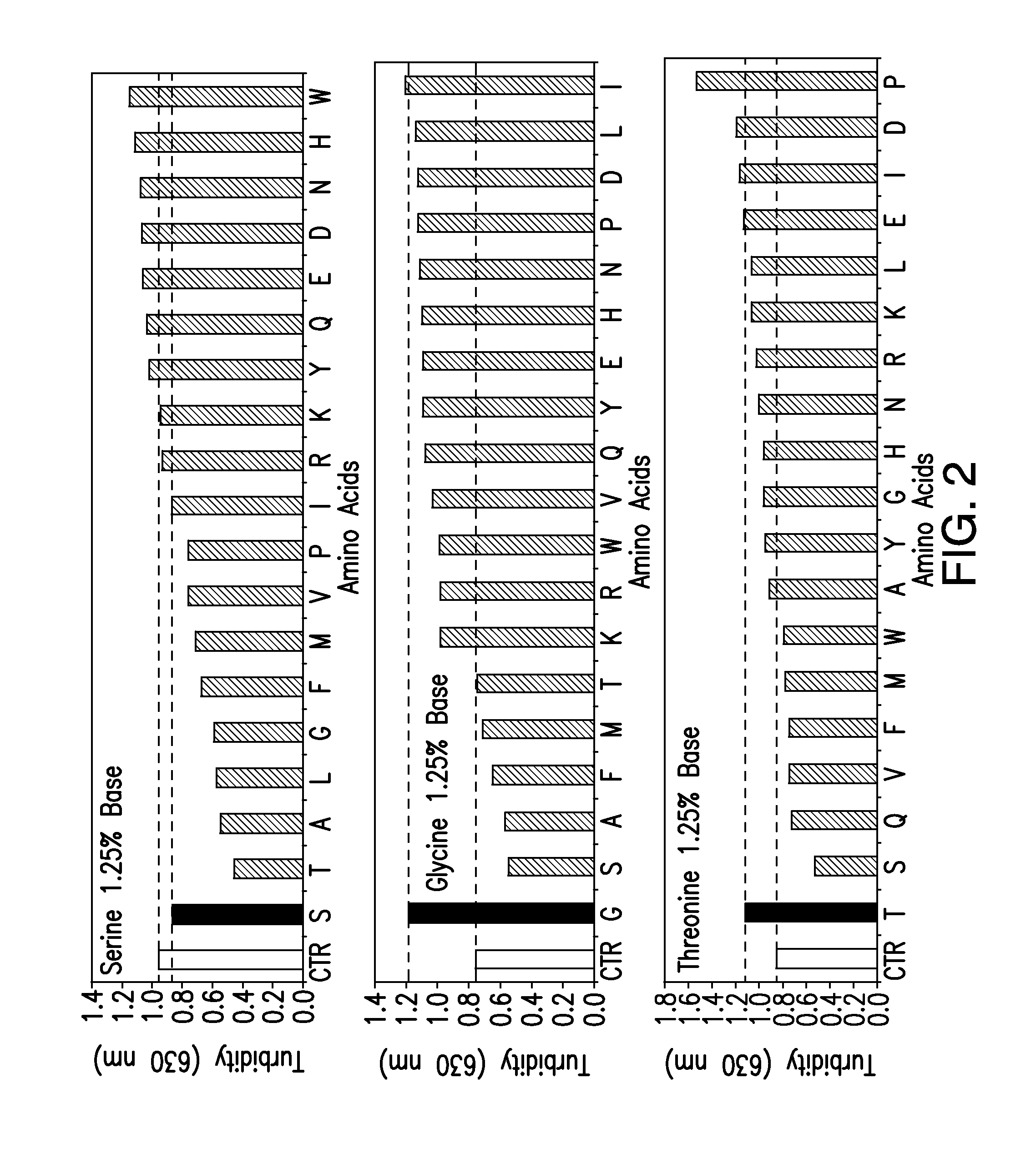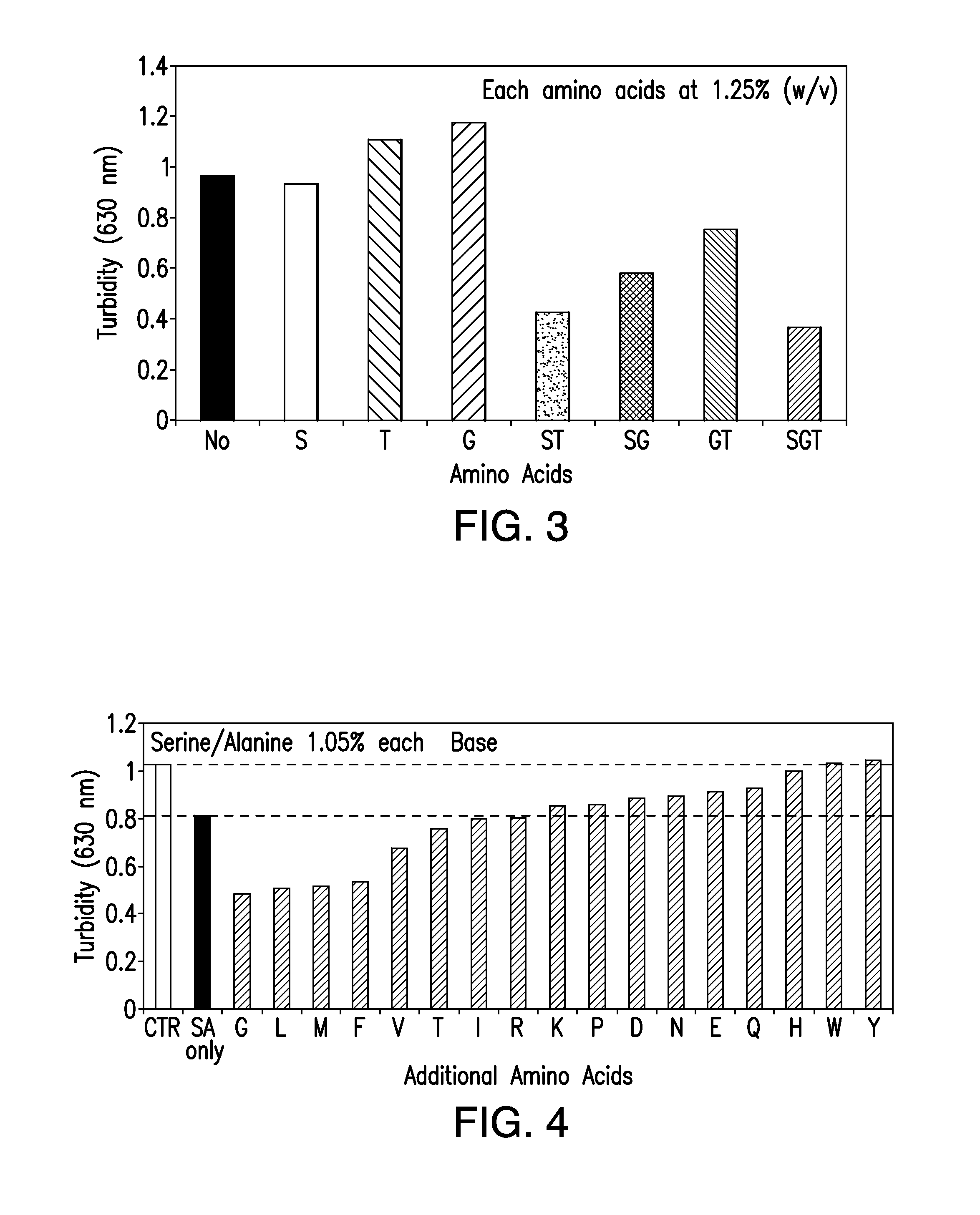Protein formulations containing amino acids
- Summary
- Abstract
- Description
- Claims
- Application Information
AI Technical Summary
Benefits of technology
Problems solved by technology
Method used
Image
Examples
experimental examples
[0176]The compositions and methods described herein will be further understood by reference to the following examples, which are intended to be purely exemplary. The compositions and methods described herein are not limited in scope by the exemplified embodiments, which are intended as illustrations of single aspects only. Any methods that are functionally equivalent are within the scope of the invention. Various modifications of the compositions and methods described herein in addition to those expressly described herein will become apparent to those skilled in the art from the foregoing description and accompanying figures. Such modifications fall within the scope of the invention.
example 1
Formulation of Infliximab
[0177]Infliximab is a chimeric monoclonal antibody specific for human tumor necrosis factor-alpha (TNFα). Infliximab includes human constant and murine variable regions.
[0178]Infliximab has been formulated in single use vials as a sterile, white, lyophilized powder for intravenous infusion. Each vial contained 100 mg of the protein, 500 mg sucrose, 0.5 mg polysorbate 80, 2.2 mg monobasic sodium phosphate, monohydrate, and 6.1 mg dibasic sodium phosphate dihydrate (no preservatives), to be reconstituted with 10 ml Sterile Water USP before use. The pH of the reconstituted solution is approximately 7.2. The final concentration of the antibody was only 10 mg / ml.
[0179]Attempts to constitute the protein at higher concentrations, e.g., 100 mg / ml did not produce satisfactory results. Stability of Infliximab at these higher concentration was poor and viscosity was high making it unsuitable for subcutaneous administration.
[0180]Stable, high concentration formulations ...
example 3
Formulation of Rituximab
[0197]Rrituximab is a genetically engineered chimeric murine / human monoclonal IgG1 kappa antibody used for the treatment of multiple indications including Non-Hodgkin's Lymphoma, Chronic Lymphocytic Leukemia, and Rheumatoid Arthritis. The product is commercially presented as a liquid formulation containing polysorbate 80, sodium citrate dihydrate, sodium chloride in pH 6.5 with the antibody concentration of 10 mg / mL for intravenous delivery.
[0198]Several amino acids turned out to stabilize the antibody against precipitation during storage for 4 days at 55° C. (Table 6). Such amino acids included arginine, histidine, methionine, lysine, and phenylalanine (Table 6).
TABLE 6Amino acids effect on stabilization of Rituximabafter 4 day incubation at 55° C.SampleConcentrationOptical Density at 630 nmAla1.0%0.81Asp0.16% 0.85Asn0.6%0.83Gln0.4%0.78Glu0.18% 0.73Thr1.0%0.66Gly1.0%0.65Ile0.6%0.59Trp0.2%0.56
TABLE 6Amino acids effect on stabilization of Rituximabafter 4 day ...
PUM
| Property | Measurement | Unit |
|---|---|---|
| Density | aaaaa | aaaaa |
| Viscosity | aaaaa | aaaaa |
| Hydrophobicity | aaaaa | aaaaa |
Abstract
Description
Claims
Application Information
 Login to View More
Login to View More - R&D
- Intellectual Property
- Life Sciences
- Materials
- Tech Scout
- Unparalleled Data Quality
- Higher Quality Content
- 60% Fewer Hallucinations
Browse by: Latest US Patents, China's latest patents, Technical Efficacy Thesaurus, Application Domain, Technology Topic, Popular Technical Reports.
© 2025 PatSnap. All rights reserved.Legal|Privacy policy|Modern Slavery Act Transparency Statement|Sitemap|About US| Contact US: help@patsnap.com



